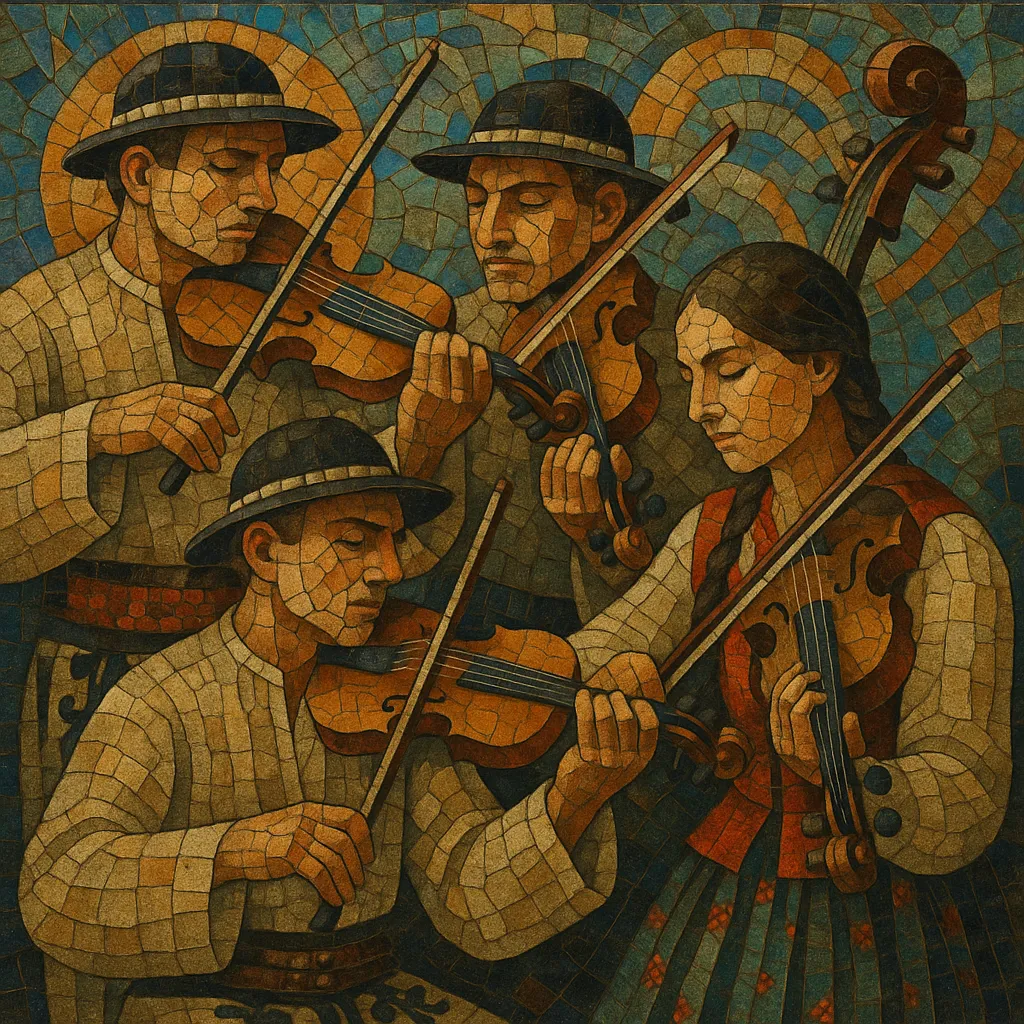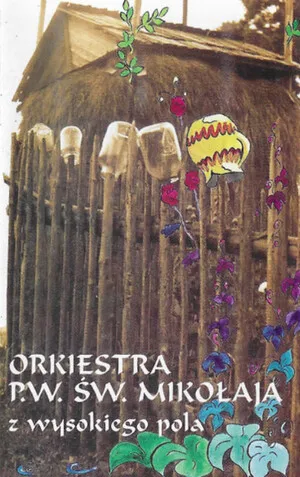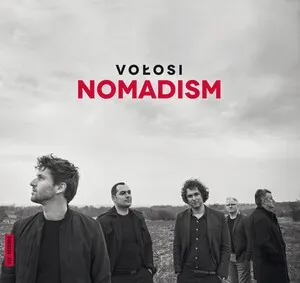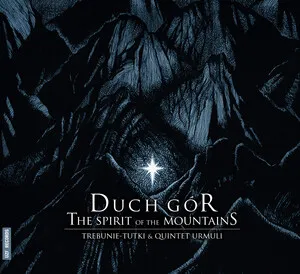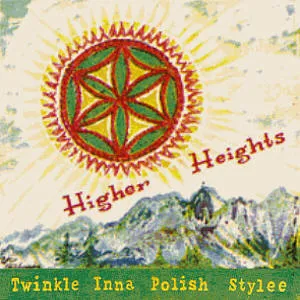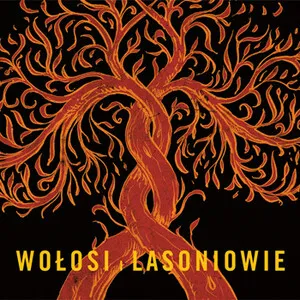Polish Goral music (Muzyka góralska) is the traditional music of the Górale (Highlanders) from the Podhale and adjacent Carpathian regions of southern Poland. It is characterized by a lead violin (prym) supported by one or two accompanying violins (sekund) and a three‑string bass (basy), producing a muscular, droning sound built on open fifths and driving rhythms.
The idiom revolves around dance-suites (góralski) and tune types such as ozwodna (free, rubato opening), zwyrtana (a fast, spinning dance), krzesany (heavily accented, “chopping” rhythm), and drobny. Melodies are modal—often mixolydian or lydian‑inflected—with a distinctive raised fourth and lowered seventh that create the recognizable “Podhalean” color. Ornamented, improvised violin lines sit over pedal drones, while singers employ an open-throated, high-carrying “white voice.”
Beyond the core string band, timbres of local shepherd instruments—Podhale bagpipes (dudy), wooden flutes (piszczałki, fujarki, dwojnice), and the long wooden trumpet (trombita)—enrich the palette. The repertoire ranges from exuberant dance tunes and wedding music to pastoral and outlaw ballads, expressing highlander pride, mountainous landscapes, and communal celebration.
Goral music grew from the pastoral life of Carpathian highlanders in the Podhale region, shaped by centuries of shepherding culture and cross‑border exchange with neighboring Slovak and other Carpathian communities. Its melodic and modal features reflect older Central and Southeastern European folk strata, especially traditions carried by historical Vlach (Wallachian) migrations.
In the 1800s the style took on a recognizable profile in and around Zakopane. Legendary figures such as Jan Krzeptowski “Sabała” popularized local tunes (nuty), story‑singing, and rustic violin traditions (złóbcoki). Ethnographers like Oskar Kolberg documented repertory and performance practice, while the rise of a broader Polish national culture brought Podhale music onto concert stages and folklore festivals.
In the interwar period, composers including Karol Szymanowski drew deeply from Podhale idioms (e.g., the ballet Harnasie), translating góralski rhythms, podhalean modes, and violin figurations into classical language. Folk ensembles and regional competitions helped standardize band lineups (prym–sekund–basy) and dance-suite forms, anchoring the style within Poland’s cultural identity.
From the late 20th century, family bands (e.g., Trebunie‑Tutki) and regional groups revitalized tradition while exploring collaborations—famously with reggae, rock, and electronic artists. The 2000s saw a wave of folk‑pop and folktronica acts (Zakopower, Gooral) adapt góralski rhythms, white‑voice singing, and Podhale scales for modern audiences. Today, the genre thrives both in its ceremonial and social roles (weddings, highlander events) and as a flexible source for worldbeat and fusion projects.

